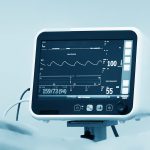The integration of diagnostics and therapeutics is rapidly reshaping the healthcare landscape. At the heart of this evolution is the concept of companion diagnostics (CDx), a critical enabler of personalized medicine. But with innovation comes regulation, and in the European Union (EU), the new In Vitro Diagnostic Regulation (IVDR) is dramatically altering the path to market for CDx products.
Unlike the previous directive, IVDR imposes much stricter requirements for demonstrating the clinical utility and safety of in vitro diagnostic devices, especially those used to guide treatment decisions. This is particularly impactful for companion diagnostics, which are now classified under higher-risk categories and require close alignment with pharmaceutical products.
For diagnostic developers, pharma partners, and regulatory professionals, understanding IVDR and developing a sound market access strategy is more crucial than ever. This blog explores the regulatory requirements under IVDR, how it affects companion diagnostics, and what it takes to succeed in this challenging but opportunity-rich environment.
What Are Companion Diagnostics?
Definition and Purpose
A companion diagnostic is a medical device, often in the form of a laboratory test, that provides essential information for the safe and effective use of a specific drug or biological product. These tests help determine which patients are likely to benefit from a particular treatment, who may be at increased risk for side effects, or how the treatment should be dosed.
Companion diagnostics are not just helpful – they are pivotal. They allow healthcare providers to tailor treatments based on the patient’s genetic makeup or biomarker expression, leading to better outcomes and more efficient use of healthcare resources.
Real-world Examples
Some of the most well-known examples include:
- HER2 testing for Herceptin (trastuzumab) in breast cancer patients
- EGFR mutation testing for non-small-cell lung cancer therapies
- BRCA1/2 mutation testing for PARP inhibitors in ovarian cancer
These diagnostics are often developed in tandem with the drugs they support, requiring joint regulatory strategies and synchronized clinical development.
Why IVDR Matters for Companion Diagnostics
Reclassification of Diagnostics
Under the IVDR, companion diagnostics are now classified as Class C devices – one of the highest-risk categories. This classification requires oversight from a Notified Body and a mandatory consultation with a medicines authority such as the European Medicines Agency (EMA).
This is a big departure from the IVDD, under which many CDx products were self-certified. The increased scrutiny means that manufacturers must provide robust data proving the test’s performance and its scientific relevance to the associated drug.
Impact on Clinical Validation
Clinical validation under IVDR involves demonstrating that the CDx accurately identifies patients who are likely to benefit from or be harmed by a particular drug. This means manufacturers must:
- Provide evidence from well-controlled studies
- Align diagnostic trial data with pharmaceutical clinical data
- Collaborate closely with drug sponsors to share data and timelines
Without successful clinical validation, a companion diagnostic cannot obtain CE marking under the IVDR – essentially blocking its entry into the European market.
Role of Notified Bodies and Regulatory Oversight
Approval Process for Companion Diagnostics
Under the IVDR, the approval of companion diagnostics has become a multi-layered process involving Notified Bodies and, for the first time, medicines regulatory authorities. For Class C companion diagnostics, manufacturers must:
- Undergo conformity assessment by a Notified Body
- Submit documentation for a scientific consultation with a competent authority (e.g., EMA or national agencies)
- Address any questions or concerns raised during this consultation before final CE marking
This additional level of scrutiny ensures that the companion diagnostic truly adds value to the pharmaceutical product, offering a more integrated approach to drug-device approval.
Involvement of Medicines Agencies
Medicines agencies now play a formal role in assessing the compatibility of companion diagnostics with the associated drug. This is a major shift from the IVDD era, where diagnostics and therapeutics were evaluated independently.
The involvement of agencies like the EMA means manufacturers must align their diagnostic development timelines with drug development milestones. Failure to coordinate these timelines could result in regulatory delays or rejection.
IVDR Compliance: Steps for Diagnostic Manufacturers
Data Collection and Documentation
Preparing for IVDR compliance begins with robust documentation. Manufacturers must collect and organize:
- Clinical evidence demonstrating safety and effectiveness
- Analytical data validating the diagnostic performance
- Scientific justification for the intended use
- Post-market surveillance (PMS) plans
All of this must be compiled into a technical documentation file ready for submission to a Notified Body.
Timing and Transition Strategies
Manufacturers should not underestimate the time and resources needed for IVDR compliance. Transition timelines vary depending on whether the product was CE-marked under the IVDD and whether it requires re-certification.
Strategic steps include:
- Gap assessments to identify non-compliant areas
- Engaging a Notified Body early due to limited availability
- Establishing cross-functional teams including regulatory, clinical, and quality experts
- Updating quality management systems (QMS) to reflect IVDR requirements
Acting proactively is essential, especially given the bottlenecks many are experiencing due to the high volume of submissions and shortage of designated Notified Bodies.
Market Access Strategy for Companion Diagnostics
Navigating the European Regulatory Maze
Gaining market access for a companion diagnostic under IVDR requires more than regulatory compliance – it demands a well-orchestrated strategy. This includes:
- Early engagement with Notified Bodies and regulatory agencies
- Alignment with pharmaceutical partners to coordinate clinical trials and submission timelines
- Understanding payer expectations and preparing value dossiers that justify reimbursement
Companies must think beyond compliance and focus on commercial readiness, including product launch planning, health economics analysis, and stakeholder education.
Integration with Pharma Drug Development
The most successful CDx products are co-developed alongside their corresponding drugs. This integrated approach ensures:
- Simultaneous regulatory approval of drug and diagnostic
- Streamlined clinical trials with shared patient populations
- Harmonized data collection and performance metrics
Early-stage collaboration allows both the diagnostic and drug developers to share insights, align on endpoints, and navigate regulatory challenges together.
Partnership Models Between Pharma and Diagnostic Companies
Co-Development Agreements
Pharma-diagnostic partnerships are evolving rapidly, especially in the age of IVDR. Co-development agreements typically include:
- Joint responsibility for clinical trial design
- Shared ownership of data
- Mutual alignment on regulatory strategy
These partnerships benefit both parties – pharma companies gain a reliable diagnostic to boost drug efficacy and approval chances, while diagnostics companies gain access to funding, expertise, and broader market reach.
Regulatory Synergies
One key advantage of collaboration is regulatory synergy. Both companies can:
- Submit joint dossiers that show how the diagnostic informs drug use
- Reduce duplication of evidence generation
- Avoid misalignment that could delay market entry
The result is a more cohesive submission package and a smoother regulatory review process.
Impact of IVDR on Existing Diagnostic Products
Re-certification Requirements
One of the most disruptive aspects of IVDR is the requirement that even existing CDx products – previously CE-marked under the IVDD – must be re-certified under the new regulation. This involves:
- Full reassessment of performance data
- Updating of technical documentation
- Conformity assessment through a Notified Body
Manufacturers with large product portfolios face a daunting task of re-certifying multiple diagnostics within a constrained timeframe.
Legacy Products and Sunset Clause
The IVDR includes a “sunset clause” that limits how long products certified under the old IVDD can remain on the market. Depending on their classification and certification date, some products may only be allowed until 2026 unless re-certified.
Manufacturers must plan now to avoid product withdrawals and market interruptions. This includes prioritizing high-value diagnostics and allocating resources accordingly.
CE Marking and Labeling Under IVDR
Requirements for Companion Diagnostics
Under IVDR, obtaining a CE mark for companion diagnostics is no longer a simple checkbox. It involves a comprehensive assessment of the device’s safety, performance, and clinical relevance in relation to the associated medicinal product. Specific CE marking requirements now include:
- Demonstrated clinical benefit through performance evaluation
- Scientific consultation with relevant medicine authorities
- Conformity assessment conducted by an authorized Notified Body
Moreover, manufacturers must provide detailed information about the drug-device interaction, including the biomarker being targeted and the specific therapeutic product the test is linked to.
Role of Unique Device Identification (UDI)
A significant addition under IVDR is the implementation of the Unique Device Identification (UDI) system. The UDI:
- Enhances traceability of diagnostic products
- Aids in post-market surveillance
- Facilitates recall management when necessary
Companion diagnostics must now carry both the Basic UDI-DI (device identifier) and the UDI-PI (production identifier) on labeling and registration databases, adding another layer of compliance.
Conclusion
The IVDR marks a significant transformation in how companion diagnostics are regulated, validated, and brought to market in Europe. While the regulation raises the bar for safety, performance, and traceability, it also adds substantial complexity to the development and approval process.
To succeed under the IVDR, diagnostic manufacturers must think strategically – developing early partnerships with pharmaceutical companies, building robust clinical evidence, and investing in regulatory readiness. At the same time, the pharmaceutical industry must recognize the critical role diagnostics play in drug efficacy and safety, supporting joint strategies for compliance and market access.
Though the path may be challenging, the payoff is clear: delivering personalized, effective, and safe therapies that transform patient care. The IVDR isn’t just a regulatory hurdle – it’s a catalyst for innovation and quality in precision medicine.


